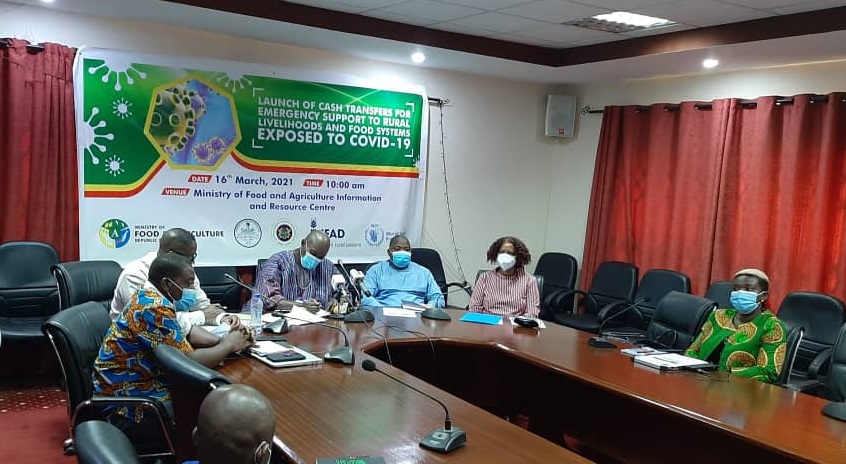
The Ministry of Food and Agriculture in collaboration with the World Food Programme, International Fund for Agricultural Development, Ministry of Gender, Children and Social Protection launched the emergency support to rural livelihoods and food systems exposed to COVID-19 at the Food and Agriculture information and resource centre on the 16th March 2021.
The programme was chaired by the acting chief director of the Ministry of the Food and Agriculture, Mr Patrick Robert Ankobiah and other representative from the WFP and country director Ms. Rukia Yacoub. This programme was mainly related to an intervention targeted at rural vulnerable farmers in selected rural communities in our country. With the pandemic ongoing and still posing threats to our food security, therefore there is the urgency and needed tackle deserved to protect our small holder farmers in the country.
The Ministry of Food and Agriculture with development partners’ consultations has the overall goal to contribute the incomes and resilience of target groups from the impact of the Covid-19 pandemic. The project is a national in-scope and expected to be implemented within 18 months, benefiting 50,000 persons directly in 25000 households, this includes 5% people with disabilities (PWDs). The targeted commodities of this intervention are maize, rice, soya beans, roots and tubers, poultry as well as small ruminants.
The emergency intervention will also extend support in the form of cash transfers to 5000 extremely vulnerable households including pwds for a quarterly year bases. The total amount to be received by each beneficiary after deduction of expenses is 288 dollars at an exchange rate of 5.7GHC. This translates to 1,641.60GHC per beneficiary.
The operational areas are the East (1,106), Savana (982) and Upper East (617) regions. The beneficiary districts in these regions are Gushegu (1,124 persons), Yunyoo- Nasuan district (1,106 persons), North East Gonja (982 persons), Wa East district (802 persons), Lambussie- Karni district (580 persons), Wa West district (335 persons), Bawku-West district (235 persons), Garu- Tempane district (217 persons) and Binduri district (165 persons).
This data based information on the beneficiaries was compiled and validated by Dr. Prosper Laari of the Ghana National Housing Registry. He indicated that the data had been validated for the beneficiaries of the Upper East, Upper West, Northern and Ashanti region respectively.
In arriving at the final selection, the following considerations were made:
- All beneficiaries selected were extreme poor farmers (60%).
- All persons with disability in the district were selected (10%).
- All females headed households within the stated category were also selected (30%).
In conclusion, the director urged all gathered there to help disseminate information on this important intervention to help achieve the goal reducing the impact of the COVID-19 pandemic on the extreme poor segment of our society.
By: Nkansah Catherine Abena
( PR MoFA)

